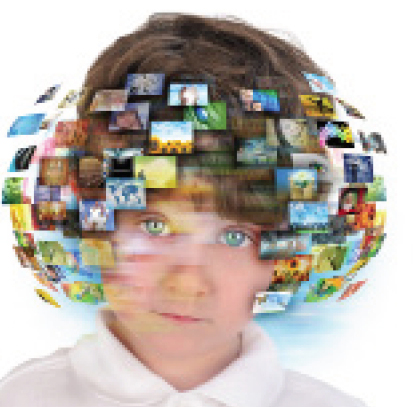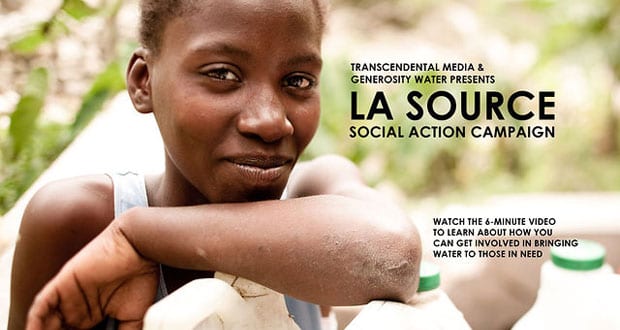The Evolving Definition of Media Psychology

Pamela Rutledge, PhD Director, Media Psychology Research Center
 ABSTRACT:
ABSTRACT:
As new technologies emerge, we need new tools to understand and use them. The last half-century of changes in media and communications technologies are transforming individual lives, popular culture, and global economics relations. This essay explores the evolving definition, opportunities and concerns for the field of media psychology.
 Pamela Rutledge, PhD, MBA, is the Director of the Media Psychology Research Center (MPRC), Adjunct Faculty at Fielding Graduate University, and an instructor and advisory board member for UC Irvine Extension’s Social Media and Internet Marketing Certificate Program. A researcher, speaker, author, and consultant, Dr. Rutledge provides assessments and guidance to individuals and organizations drawing on a diverse background in media communications and design, business strategy, and psychology. Dr. Rutledge specializes in social media applications and transmedia narrative applied to brand development. She has published both academic and popular work and gives presentations and workshops to internationally on Transmedia Storytelling for Marketing, Branding and Social Entrepreneurship and The Psychology of Engagement in an Experience Economy. She can be reached through www.pamelarutledge.com.
Pamela Rutledge, PhD, MBA, is the Director of the Media Psychology Research Center (MPRC), Adjunct Faculty at Fielding Graduate University, and an instructor and advisory board member for UC Irvine Extension’s Social Media and Internet Marketing Certificate Program. A researcher, speaker, author, and consultant, Dr. Rutledge provides assessments and guidance to individuals and organizations drawing on a diverse background in media communications and design, business strategy, and psychology. Dr. Rutledge specializes in social media applications and transmedia narrative applied to brand development. She has published both academic and popular work and gives presentations and workshops to internationally on Transmedia Storytelling for Marketing, Branding and Social Entrepreneurship and The Psychology of Engagement in an Experience Economy. She can be reached through www.pamelarutledge.com.
Introduction
As new technologies emerge, we need new tools to understand and use them. The last half-century of changes in media and communications technologies are transforming individual lives, popular culture, and global economics relations. Public and academic recognition of the integration of media into daily life has reached a tipping point, and the demand across society for an understanding of how to think about the things they see, hear, and use every day is palpable. Psychologists are responding, applying the rich body of psychological knowledge and theory to the vast world of media experience. Media psychology is the result. According to Fischoff (2005), media psychology has only materialized as a separate field since the creation of a Media Psychology division in the American Psychological Association (APA) in the 1980s. Even in that short time, technological advances have revolutionized the media environment, generating opportunities and raising concerns.
In spite of the obvious need, there is little consensus as to what media psychology actually is and does. Definitions within the profession vary from a narrow performance-centric view of psychologists in the media, to a global view of media’s role in society (Gregory et al. 2007). Scholars working in the field represent a variety of disciplines, both in and out of psychology—such as education, healthcare, business, and entertainment (e.g. Cline and Haynes 2001, Howard 2002, Krotoski 2005, Rudestam 2004).
It is important to sift through the research for strains of commonality, but a definition for any field should not be created by looking backward, and certainly not in one that changes as rapidly as media psychology. A definition does several things: 1) it sets the compass and standards of a field, 2) it frames the work of its practitioners, 3) it creates an intellectual base camp for exchange and integration, and 4) it informs the public. In this paper, I will discuss some of the current definitions and the state of the field. I will argue that it is important to create an inclusive, concise and meaningful definition. I will also argue that in creating this definition, we must be open to integrating new understandings of the way the world works. Just as science has recognized the limitations of a reductionist point of view, I will argue that media psychology has a unique opportunity to use the exciting conceptual breakthroughs in fields like biology, network theory, and neuroscience, to craft a model that more closely reflects the human relationship with media.
Media Saturation
We live in a media-saturated world. More than 98% of U.S. homes have a television set (Rideout 2007). Sixty million Americans say that the internet helped them make big decisions or get through major events in their lives (Horrigan 2006). Video game and cell phone use is normal behavior for adolescents (Gee 2004, Godwin-Jones 2005). We see cell phones, computers, and televisions all the time, but the applicability of media psychology is less obvious elsewhere. For example, telemedicine and distance learning provide economical medical and educational services that overcome geographical constraints (Grealish et al. 2005, Luskin 2002, Rudestam 2004). Software engineers use motivation and persuasion to develop user-friendly computer interfaces (Fogg 1999). Interactive media and social networking provides socialization experiences and social connection (Auter 2007, Chaffee, Nass, and Yang 1990, Hom, Tai, and Nichols 2004, McLeod and McDonald 1985).
If a field is defined by practice, then we would expect research to reflect the breadth of media psychology applications. Yet research in media psychology remains fairly narrow (Giles 2003). Of the approximately 200 articles published by the Media Psychology Journal since its inception in 1999, 80% involve television and over 50% of the research involves children. Derwin, de Merode, and Shayne (2006) also report that few researchers incorporate ethnicity or social and economic status. While admittedly there are constraints in media-related research, such as the methodological challenges of rapidly changing technologies and social pressure on research agendas, the content of the journal only narrowly achieves the stated goal of presenting research at “the intersection of psychology and media communication” (Bryant and Roskos-Ewoldsen 2005, 323).
So, the definition remains elusive. Giles (2003) talks about the scope and evolution of media psychology, but never specifically defines the field. Others have suggested that media psychology is: 1) the use of theories, concepts and methods of psychology to study the impact of the mass media on individuals, groups, and cultures (Fischoff 2005, 2); 2) a psychological perspective on mediated communication (Reeves and Anderson 1991, 597); and 3) a focus on the roles psychologists play in various aspects of the media, including, but not limited to, radio, television, film, video, newsprint, magazines, and newer technologies (Media Psychology Division 46 n.d.)
While these are by no means inclusive, they show the difficulty in achieving a definition that is inclusive, forward thinking, concise and that imparts adequate information. The definition has been additionally hampered by two prevailing perceptions. The first is the popular image of a media psychologist as a psychologist who appears in the media. This may be partly attributable to the founders of Division 46 for Media Psychology of the American Psychological Association (APA) in the 1980s who were primarily clinical psychologists active in popular media, or to the notoriety of media personalities such as Dr. Phil. (The division is since renamed The Society for Media Psychology and Technology.) This stereotypic model views media only as a distribution channel and does not credit the psychologist with any training or understanding of media processes. From McLuhan’s (1962) perspective, this leaves a media psychologist with very little to bring to the table. Within Division 46, members are still divided in their perceptions. Gregory, Cabiria, Hogg, Temenski, Rutledge, and Wells (2007) replicated a 1998 study by Luskin and Friedland that is summarized in What is Media Psychology? A Qualitative Analysis. They reported that perceptions of media psychology tended to vary by age, with older members maintaining the narrow view and younger members seeing psychology as a tool to analyze and develop media. Unfortunately, the potent image in the public’s eye of a psychologist on television is both hard to shed and more easily visualized than a psychologist who studies the behavioral and cognitive aspects of media.
A second obstacle for media psychology to overcome is the pejorative view of “media” as an area unworthy of academic study or lacking in scholarly rigor (Giles 2003). The debate rages in academic halls and on blogs on the internet. How can something new, cool, and hip (and even fun) be scholarly? The error—and challenge going forward—is the placement of the word ‘media’ central to the definition.
I conceptualize media psychology as understanding the process and interaction between human experience and mediated communication of any kind. Whether the media experience is going online to play World of Warcraft or watching a documentary on PBS, it is the interaction between the human and the media experience that matters. To make useful sense out of it, you have to know something about both, but psychology is the underlying foundation.
A problem for the field is that media and communication theories lack substantial foundation and uniform theoretical approach without drawing heavily from psychology. In one communication theory text book, Anderson (1996, in Muller 2005) identified 249 separate theories, only 7% of which appeared in more than three other communications texts. Without psychology, these theories are left with the ‘what’ and the ‘how many’, but not the ‘why’. Without ‘why,’ we cannot predict or contribute to something better.
Many media theories draw heavily from cognitive psychology, although informed by different orientations (Muller 2005). Common foundations for media and communication theories are:
- Social Learning Theory. The premise of observational learning and behavior modeling drives both public concern about violent media content and optimism about positive content of educational programs, games, and other media (Gauntlet 2005, Bandura 1986).
- Social constructionism. The basis for social constructivism is that the individual’s interaction with the environment, such as exposure to media messages, symbols and narratives, gradually shape his or her view of the world, self, and social reality (Postman 1985, Gerbner and Gross 1976, Gergen 1991, McAdams 1993). This is an common foundation in gender and racial stereotype research (e.g. Coltrane and Messineo 2000)
- Motivations, attitudes, and emotions. The use of this body of theoretical knowledge views individuals as selecting mass media experiences that satisfy cognitive, social and emotional needs (Rubin 2002). Early models incorporated motivation based on Maslow’s hierarchy of needs; others draw from psychoanalytic theory and Sullivan’s view of reciprocal emotion (Acton and Revelle 2002, Horton and Wohl 1956, McGuire 1974). Ball-Rokeach (1985), for example, examines what propensities encourage media use to escalate from a benign need satisfaction to an addiction.
A Different View
Even drawing from media and communications theories and their foundations in psychology, we still don’t get close to a definition of media psychology that will work in a rapidly changing world. I believe that this is because researchers have tended to view media-related research from a reductionist model. Reductionist theories view media interaction as unidirectional from sender to receiver, even when they incorporate environmental filtering and individual differences. For example, social constructivist theories, uses and gratification models, and agenda setting theories all describe an interactive process between media and society, but their models culminate with the receiver; there are no significant influences from the receiver back to the sender. Social cognition theories, such as Vygotsky’s (1978), describe a more reciprocal but currently under-emphasized process. Maletzke’s communicator theory is a dynamic change model, but it is complicated and not widely employed (Wilson 1999). Other fields, however, have promoted the co-evolutionary effects of a dynamic network model as a much more realistic description of human-environmental interaction (e.g. Barabasi 2003, Strogatz 2003, Watts 2003).
Evolutionary psychologists Tooby, Cosmides, and Barrett (2003) incorporate the importance of an interplay of multiple factors—in this case media, humans, social organizations and institutions—but they argue that natural selection acts to organize these relationships and that these interactions produce functional outcomes. From their perspective, the development process pays heightened attention to the factors that functionally coordinate the interaction between the media and the audience. In this process, both organisms are mutually affected and form feedback loops that cause reciprocal change throughout their evolution.
Evidence from research on the neurobiology of social bonding and attachment demonstrates that new biological mechanisms appear to support functional behavioral changes. This isn’t a new perspective. Vygotsky (1978), Mead (1967) and Freud (Gay 1989) all emphasized the role of social interaction in creating internal structures. Wexler (2006) writes that the time between birth and early adulthood is highly plastic for brain maturation and that the physical structure of the brain is subject to shaping by the environment. The combination of new mechanisms and high plasticity suggest that there is great individual functional variability due to differing environmental influences on the development of the brain. Later in life, people conversely reshape their physical environment to suit their mental structures by altering physical structures, laws, standards of behavior, language and the arts. Because of the change in brain plasticity between youth and adulthood, successive generations can have significantly different internal structures. When we reach adulthood, we are less amenable to change and are more likely to try to change the environment to fit our internal structure (Wexler 2006). This is a biological description of what Prensky (2001) refers to as “digital natives” and “digital immigrants.” The generation that is growing up now will have different cognitive structures than their parents and will make different alterations on the environment. Because the media survives only by the attendance of the audience, these alterations will be reflected in the next iteration of media content.
As media psychologists, we must recognize the evolving media environment. Part of our job will be to take up Postman’s (1985) challenge of training the next generation to engage positively and productively with media; part will be easing the fears of immigrants learning to live in the new digital world. We also need to place the study of psychological processes within the context of mediated communications and recognize the dynamic role of these processes in interpersonal relations, social interaction and social structures. We need, in other words, a definition of the field that acknowledges the reciprocal relationship between individuals and media. Nearly 30 years ago, Cartwright (1979) argued for defining the field of social psychology as the interaction between social environments and social behaviors to make social psychology more relevant. This is the foundation of social ecology (e.g. Heft 2001), self-organizing management systems (e.g. Drucker 1988, Emery 1965), evolutionary psychology (e.g. Tooby, Cosmides, and Barrett 2003), complex adaptive systems (Young 2007), and research on social capital (e.g. Best and Krueger 2006). Without recognizing that media psychology is the dynamic interaction between human experience and media, we will make biasing errors in our judgments about correlations and causality.
Conclusion
Revolutions need new paradigms (Kuhn 1970). As psychologists and media professionals, we are trained and mentored by psychologists as well as media and communications scholars and professionals, many of whom learned from models within these distinct academic fields. In defining media psychology, we have an opportunity to establish a new paradigm that breaks free of traditional structures and engages the best minds across many disciplines. If we can learn to see media as a co-evolutionary function of human experience, our analysis and contribution will be much more powerful.
The difficult and extraordinary thing about media is the breadth of its touch. While that makes a ‘one-size-fits-all’ definition difficult, it also means that for those of us who are trained in the knowledge of people and media, we can be much more instrumental in advancing the field and achieving positive social change.
References
Acton, G. Scott, and William Revelle. 2002. Interpersonal Personality Measures Show Circumplex Structure Based on New Psychometric Criteria. Journal of Personality Assessment 79: 446-471. Accessed November 5, 2006.
Auter, Philip J. 2007. “Portable social groups: willingness to communicate, interpersonal communication gratifications, and cell phone use among young adults.” International Journal of Mobile Communications 5 (2):139-156.
Ball-Rokeach, S. J. . 1985. The Origins of Individual Media-System Dependency: A Sociological Framework. Communication Research 12 (4): 485-510. Accessed November 2, 2006. doi:10.1177/009365085012004003.
Bandura, Albert. 1986. Social Foundations of Thought & Action. Englewood Cliffs, NJ: Prentice-Hall, Inc.
Barabasi, Albert-Laszlo. 2003. Linked: How Everything is Connected to Everything Else and What it Means. New York: Penguin Group.
Best, Samuel J., and Brian S. Krueger. 2006. Online Interactions and Social Capital Social Science Computer Review 24 (4). Accessed October 2, 2007.
Bryant, Jennings, and David Roskos-Ewoldsen. 2005. It Really Did Take a Village … To Launch a Journal! New Beginnings. Media Psychology 7 (4): 323-324. Accessed October 1, 2007.
Cartwright, Dorwin. 1979. Contemporary Social Psychology in Historical Perspective. Social Psychology Quarterly 42 (1): 82-93. Accessed September 24, 2007.
Chaffee, Steven H., Clifford I. Nass, and Seung-Mock Yang. 1990. “The Bridging Role of Television in Immigrant Political Socialization.” Human Communication Research 17 (2):266.
Cline, R.J.W, and K.M. Haynes. 2001. Consumer health information seeking on the Internet: the state of the art. Health Education Research 16 (6): 671-692. Accessed September 2, 2006.
Coltrane, Scott, and Melinda Messineo. 2000. The Perpetuation of Subtle Prejudice: Race and Gender Imagery in 1990s Television Advertising. Sex Roles: A Journal of Research 42 (5/6). Accessed October 12, 2007.
Derwin, Ellen Baker , Janet de Merode, and JoAnne Shayne. 2006. Santa Barbara.
Drucker, P.F. 1988. “The Coming of the New Organization.” Harvard Business Review January-February:45-53.
Emery, F.E. & Trist, E.L. 1965. The Causal Texture of Organizational Environments. Human Relations 18: 21-32.
Fischoff, Stuart. 2005. Media Psychology: A Personal Essay in Definition and Purview. Journal of Media Psychology 10 (1). Accessed April 18, 2006.
Fogg, B.J. 1999. “Persuasive Technologies.” Communications of the ACM 42 (5).
Gauntlet, David. 2005. Moving experiences: media effects and beyond. Second ed. Eastleigh, UK: John Libbey Publishing .
Gay, Peter, ed. 1989. The Freud Reader. New York: W. W. Norton & Company.
Gee, James Paul. 2004. What Video Games Have to Teach Us About Learning and Literacy. New York: Palgrave Macmillan.
Gerbner, G., and L. Gross. 1976. Living with television: The violence profile. Journal of Communication 26 (76).
Gergen, Kenneth J. 1991. The Saturated Self: Dilemmas of Identity in Contemporary Life. New York: BasicBooks.
Giles, David C. 2003. Media Psychology. Mahwah, New Jersey: Lawrence Erlbaum Associates.
Godwin-Jones. 2005. Emerging Technologies: Messaging, Gaming, Peer-to-Peer Sharing: Language Learning Strategies & Tools for the Millennial Generation. . Language, Learning & Technology 9. Accessed October 5, 2007.
Grealish, Annmarie, Andrew Hunter, Robin Glaze, and Louise Potter. 2005. “Telemedicine in a child and adolescent mental health service: participants’ acceptance and utilization.” Journal of Telemedicine and Telecare 11:S53.
Gregory, Erik M., Jonathon Cabiria, Jerri Lynn Hogg, Lynn Temenski, Pamela Rutledge, and Timothy Wells. 2007. “Media Psychology Awareness Study, Phase II: APA Division 46.” APA National Convention, San Francisco, CA, August 20.
Heft, Harry. 2001. “Ecological Psychology in Context: James Gibson, Roger Barker, and the Legacy of William James Radical Empiricism.” In. Mahwah, NJ: Lawrence Erlbaum Associates. http://www.questia.com/PM.qst?a=o&d=104917348%3E. (accessed October 8, 2007).
Hom, Sharon, Amy Tai, and Gabriel Nichols. 2004. The rise of the internet and advancing human rights. China Rights Forum 37 (Nov. 3). Accessed March 24, 2007.
Horrigan, John. 2006. The Internet’s Growing Role in Life’s Major Moments Washington, DC: Pew Internet & American Life Project.
Horton, Donald, and R. Richard Wohl. 1956. “Mass Communication and Para-social Interaction.” Psychiatry 19:215-219.
Howard, Philip. 2002. Network Ethnography and the Hypermedia Organization: New Media, New Organizations, New Methods New Media & Society 4 (4): 550-574. Accessed October 1, 2007.
Krotoski, Aleks. 2005. Chicks and Joysticks: An Exploration of Women and Gaming. ELSPA (Entertainment and Leisure Software Publishers Association. Accessed July 8, 2007.
Kuhn, Thomas S. 1970. The Structure of Scientific Revolutions. Chicago, IL: University of Chicago Press. Original edition, 1962.
Luskin, B. 2002. Casting the Net over Global Learning. Irvine, CA: Griffin Publishing Group.
Luskin, B. J., and Lilli Friedland. 1998. Task Force Report: Media Psychology and New Technologies. Washington D.C.: Media Psychology Division 46 of the American Psychological Association.
McAdams, Dan P. 1993. The Stories We Live By. New York: Guilford Press.
McGuire, W. J. 1974. “Psychological Motives and Communication Gratification.” In The Uses of Mass Communications, edited by Jay G. Blumler and Elihu Katz. Beverly Hills, CA: Sage Publications.
McLeod, J., and D. McDonald. 1985. Beyond Simple Exposure Media Orientations and their Impact on Political Processes’. Communication Research. Communication Research 12: 3-33.
McLuhan, Marshall. 1962. The Gutenberg Galaxy. Toronto: University of Toronto Press.
Mead, George Herbert. 1967. Mind, Self, and Society: From the Standpoint of a Social Behaviorist. Chicago, IL: University of Chicago Press.
Media Psychology Division 46. n.d. “Media Psychology.” American Psychological Association Accessed October 8, 2007. http://www.apa.org/divisions/div46/.
Muller, Katherine. 2005. Communication Theories: Perspectives, Processes, and Contexts. New York: McGraw-Hill.
Postman, Neil. 1985. Amusing Ourselves to Death: Public Discourse in the Age of Show Business. New York: Penguin Books.
Prensky, Marc. 2001. Digital Natives, Digital Immigrants: Do They Really Think Differently? On the Horizon 9 (6). Accessed September 15, 2007.
Reeves, Byron, and Daniel Anderson. 1991. Media Studies and Psychology. Communication Research 18 (5). Accessed September 22, 2007.
Rideout, Victoria J. 2007. Parents, Children & Media. In A Kaiser Family Foundation Survey. Washington D.C.: Henry J. Kaiser Family Foundation.
Rubin, A. M. 2002. “The uses-and-gratifications perspective of media effects.” In Media effects: Advances in Theory and Research, edited by J. Bryant and D. Zillmann, 525-548. Mahwah, NJ: Lawrence Erlbaum Associates.
Rudestam, Kjell Erik. 2004. “Distributed Education and the Role of Online Learning in Training Professional Psychologists.” Professional Psychology: Research and Practice 35 (4):427-432.
Strogatz, Steven H. 2003. Sync: The Emerging Science of Spontaneous Order.
Tooby, John, Leda Cosmides, and H. Clark Barrett. 2003. The Second Law of Thermodynamics Is the First Law of Psychology : Evolutionary Developmental Psychology and the Theory Of Tandem, Coordinated Inheritances: Comment on Lickliter and Honeycutt (2003). Psychological Bulletin 129 (6): 858-865. Accessed October 3, 2007.
Vygotsky, L.S. 1978. Mind in Society. edited by Michael Cole, Vera John-Steiner, Sylvia Scribner and Ellen Souberman. Cambridge, MA: Harvard University Press.
Watts, Duncan J. 2003. Six Degrees: The Science of a Connected Age. New York: WW. Norton & Company, Inc.
Wexler, Bruce E. 2006. Brain and Culture: Neurobiology, Ideology, and Social Change. Cambridge, MA: The MIT Press.
Wilson, T.D. 1999. Models in information behavior research. Journal of Documentation 55 (3): 249-270.
Young, H. Peyton. 2007. “Innovation Diffusion in Heterogeneous Populations: Contagion, Social Influence, and Social Learning.” Santa Fe Institute Accessed 07-09-038. http://www.santafe.edu/research/publications/wpabstract/200709038.



